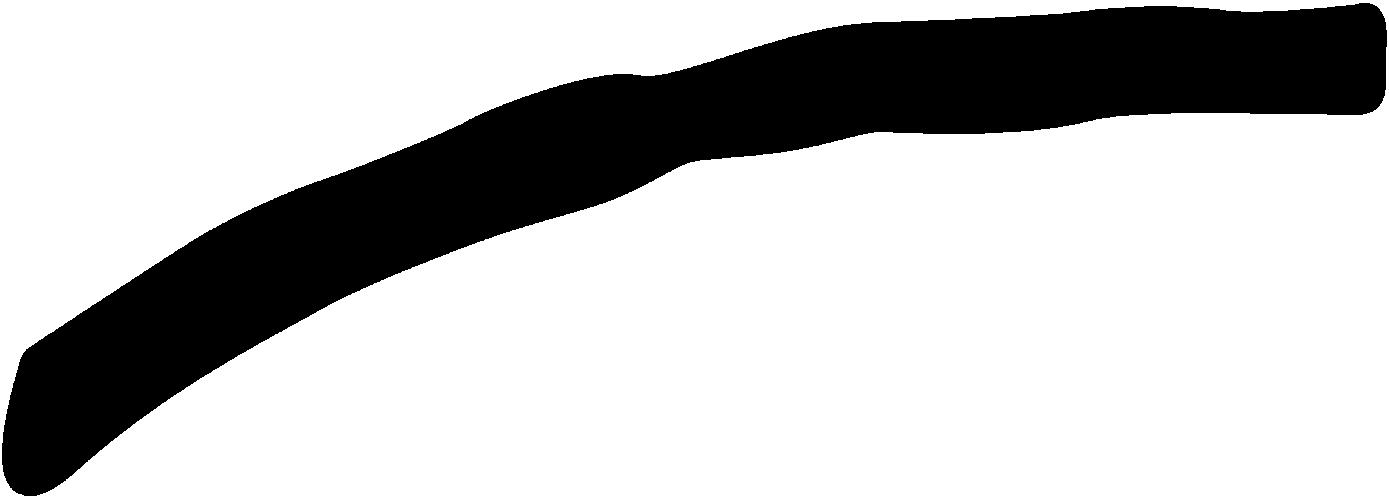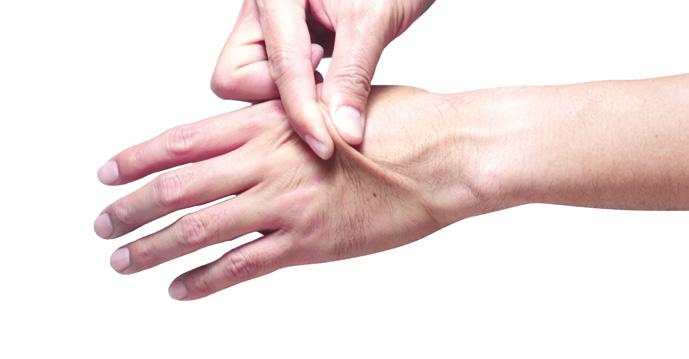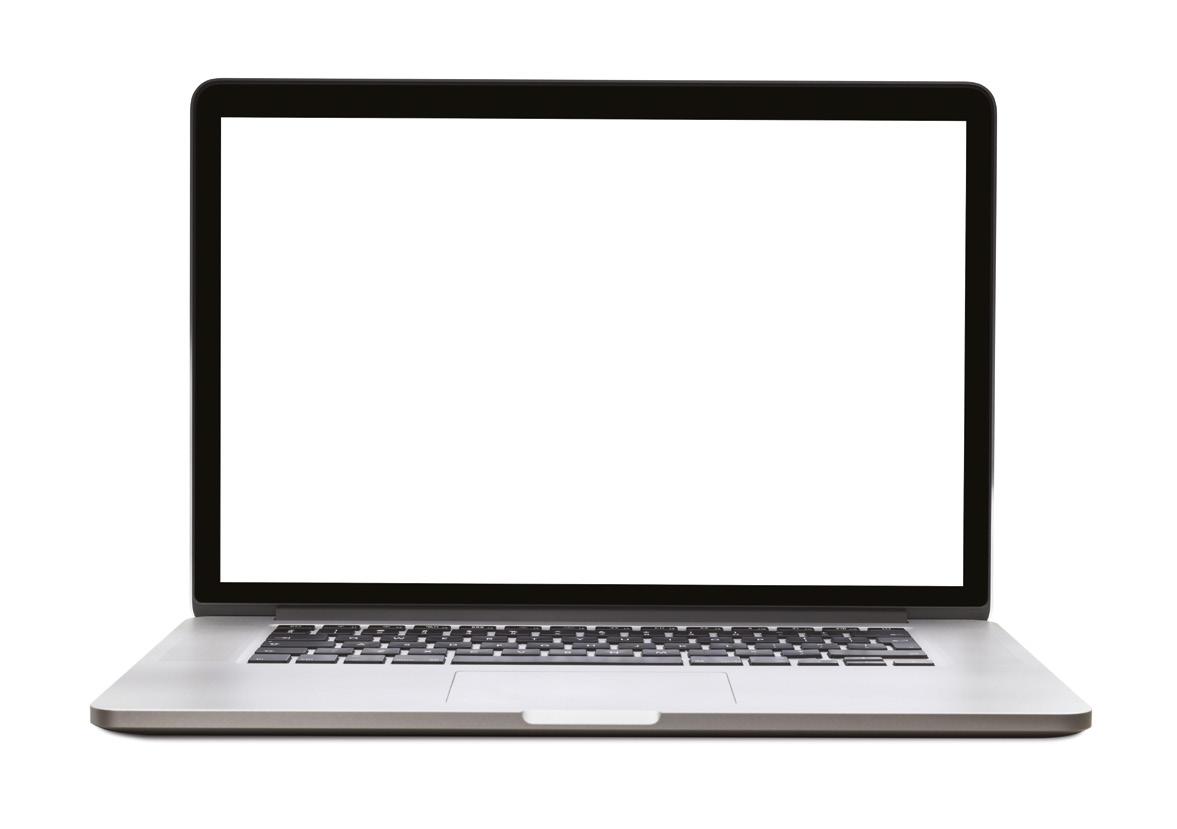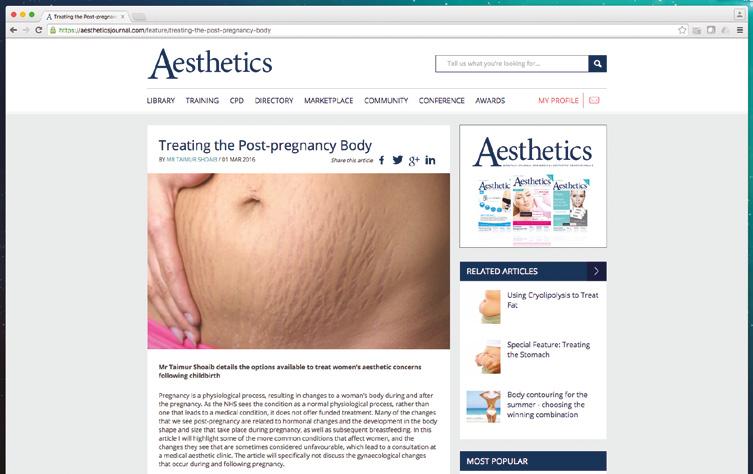
12 minute read
Hand Rejuvenation Using Fillers
The hands represent one of the most important functional parts of the human body. Although patients pay particular attention to facial rejuvenation, they often tend to neglect other parts of their body; notably the hands. Hand rejuvenation is becoming increasingly popular not only in our clinic, but across the specialty too. Just a few years ago, clinic operator Transform Cosmetic Surgery reported an 28% rise in the number of enquiries from patients wanting antiageing procedures on their hands.1,2 Treating ageing hands is of considerable importance to patients as, just like our face and neck, they are an area of the body that are almost always exposed, no matter the season. This in turn can mean that the hands can display a sense of one’s age. In fact, according to a study conducted by the American Society of Plastic Surgeons, a person’s age can be estimated by looking at the hands alone.3 We have found that potential patients become interested in hand rejuvenation when there is a discrepancy between the appearance of facial age and hand age. Treatment options for hand rejuvenation include dermal filler injections, laser therapy, sclerotherapy, and autologous fat grafting, amongst others. Each treatment option is dependent on the patient’s concern, for example pigmentation could be treated with lasers. However, in this article we will be focusing on our preferred technique, the use of dermal fillers to restore the threedimensional aspect of the ageing hand for volume loss.4 In general, volume loss of the hands occurs in the older population.5 Hand anatomy Understanding the anatomy of the hand and identifying its vasculature is paramount for successful rejuvenation procedures. In addition, it is
Hand Rejuvenation important to recognise that the epidermis and dermis are thinner in the hands compared to most areas of the face.6 Using Fillers There is very little subcutaneous fat on the dorsum of the hands, so even small decreases in collagen or elastin fibres will cause a noticeable Dr Victoria Manning and Dr Charlotte Woodward impact on the hands. The dorsum of the hand is the next most prominent exposed surface discuss characteristics of ageing hands and area after the face.7 Bidic et al. conducted a detail their preferred treatment choice, sharing histological and ultrasound analysis of the dorsum of the hand and found three distinct a successful case study layers that they called the dorsal superficial, the dorsal intermediate, and the dorsal deep lamina.8 The dorsal superficial lamina is found between the dermis and dorsal superficial fascia; this is our target plane for filler injections. The sensory nerves and dorsal veins are contained within the dorsal intermediate lamina and the extensor tendons reside in the dorsal deep lamina.8 Thus, targeted injection of dermal filler into the superficial lamina allows camouflage of the veins and tendons, making them less obvious. Importantly, there are no vital structures running in the superficial layer, making it a safer layer for injection.7 Therefore it is important to place the product in the right plane to give an optimal correction for the volume loss and a natural clinical result without risk of complications. Due to the thinness of the skin on the dorsum, the technique for product placement is important to consider.9 Rating Definition 0 No tendons are exposed 1 One or two tendons are slightly exposed 2 All three central tendons are partially exposed 3 All three central tendons are partially exposed, with one or two tendons fully exposed 4 All three central tendons are fully exposed Characteristics of hand ageing Hand ageing is characterised by dermal and subcutaneous volume loss, resulting in wrinkle formation. It is also associated with increased visibility of tendons and veins as well as age spots, textural roughness, loss of elasticity and epidermal, dermal, and subcutaneous thinning, which can lead to a crepey-like appearance.5 In the deeper planes, atrophy of the subcutaneous fat causes underlying tendons and bony metacarpals to become visible. In comparison, youthful hands appear plump and firm and the skin maintains its elasticity and smoothness. With that in mind, there are two grading scales that we use in clinic to assess the severity of volume loss in the hand. The first is the Busso Hand Volume Severity Scale10 (Figure 2) which focuses on tendon exposure and visibility. As well as this, Carruthers et al.11 published a validated grading scale for assessment of volume loss in ageing hands (Figure 3). We find that these are good tools for aesthetic practitioners to use because they allow us to monitor treatment outcomes and this in turn helps us manage patient expectations. Both intrinsic and extrinsic factors influence ageing of the hands and generally the speed and extent of the changes vary with the individual patient’s genetics. We find that some of the most common external
Advertisement




8
1. Dorsal superficial lamina (DSL) 2. Dorsal superficial fascia (DSF) 3. Dorsal intermediate lamina (DIL) 4. Dorsal intermediate fascia (DIF) 5. Dorsal deep lamina (DDL) 6. Dorsal deep fascia (DDF) 7. Extensor tendon 8. Visible vein 9. Septum
9
1
3 4 5
6 7
Figure 1: The anatomy of the hand, showing the different layers of the dorsum, fascial layers and fatty laminae, with cannula injection placed within the dorsal superficial lamina. Adapted from Bidec et al.8 Figure 2: The Busso Hand Volume Severity Scale. Note: the hand should be laying prone on a level surface, fingers extended.10



0 1 2 3
factors include smoking, alcohol abuse and photodamage.7 It is important to note that we always remind our patients that prevention truly is the best medicine, so recommend that they apply a broadspectrum sunscreen with an SPF 30 or more to all exposed areas of skin — including the backs of the hands. Treatment using fillers Although there are a number of treatment options available, we have found the use of dermal fillers to be most effective for treating volume loss and reducing the visibility of both tendons and veins.12 A dermal filler containing polycaprolactone is our product of choice as it will volumise and smooth the skin, whilst stimulating the production of collagen to provide a youthful look.12 Case Study A 63-year-old female presented in clinic complaining that she felt her hands were ageing; she had recently inherited some rings that she felt too embarrassed to wear as her hands had such visible tendons and the skin looked crepey. A comprehensive medical and aesthetic history was taken and her expectations addressed. She felt her hands simply didn’t match her face. Examination showed them to be a Busso grade 3 and we felt we could improve her hands to a grade 1.10 Contraindications to treatment were explored, such as history of autoimmune conditions and any known allergy to polycaprolactone. Pre and post procedural photos were then taken and consent was obtained. A blunt-tipped 25-gauge cannula was used to inject the product. The cannula was inserted subcutaneously, superficial to the veins, into the superficial fat compartments, with an entry point just distal to the wrist crease. A cannula was used for this treatment because, in our experience, a more proximal site of entry is preferred to maximise the surface area filled with a single-entry point, hence reducing tissue trauma and preventing intravascular injection. At the cannula entry site, the patient was anaesthetised using lidocaine and then an entry point using a 23-gauge needle was created. Through that opening, the cannula was introduced. The preferred technique is to ensure that the skin is ‘tented’ upward (Figure 4) to allow the cannula to easily enter the dorsal superficial lamina; a safe plane to inject filler. Skin tenting helps to increase the injection space, which is the fatty plane between the dermis and the superficial dorsal fascia. Skin tenting also provides more separation between the cannula and the veins and
4
tendons that are located at the base of the ‘tent’.13 The filler was deposited directly above the fascial plane in a parallel fashion between the ligaments. The optimal place for the deposition of a filler is the under-surface of the dermis and we find that using a cannula scraping the deep side of the dermis is a good technique, which gives a perfect placement of product restricted to the fascial layer. To prevent lumps and bumps, we recommend a linear thread technique of 0.1ml per pass. The total amount of product used is really dependent on the degree of volume loss, however generally speaking you can expect to use 0.5ml to 1ml per hand. We like to use a filler that is moldable, has a long duration of action and is also durable to withstand repeated movements, which is essential to maintaining normal function of the hands. For this particular case 1ml was used in each hand and our product of choice was Ellansé. It is important to be aware that when using collagen-stimulating fillers, practitioners should under-correct to allow time for the neocollagenesis process to have an effect, especially in younger patients.14 The product was then massaged to ensure the precise contouring and an even spread. In this case, post-treatment instructions were given, namely hand hygiene. We asked her to ensure hands were washed frequently especially with pets in the house. This helps to reduce post-treatment infection. We also advised the use of an antihistamine for any post-procedural oedema, should it arise. She was reviewed two weeks following treatment very pleased with the results and a three month review is also scheduled. At this point, a further top-up treatment can be undertaken, but never before, due the collagen stimulation being maximal at 12 weeks.
Possible complications Complications when using dermal fillers include erythema, contusions and tenderness, amongst others, however the most common issues that arise when treating the hands are oedema and ecchymosis.15 From personal experience, immediate post-treatment oedema can be reduced by asking the patients to sit on their hands for five minutes after injection, which has the same effects as compression. Figure 4: An example of the tenting technique However, we are uncertain of the percentage of patients that
Figure 3: Carruthers et al. scale of ageing hands. (0= no volume loss to 4 = very severe volume loss).11 Adapted by Aesthetics journal for publication. Figure 5: Before and two weeks following injection of 1ml per hand. Image courtesy of River Aesthetics.



actually experience swelling.16 Ecchymosis is minimal with this technique due to using only one entry point for cannula insertion. I find the presence of bumps are minimal too, as long as the practitioner massages post treatment to smooth the product.
Conclusion Although the majority of patients requesting cosmetic procedures look to rejuvenate the face, ageing hands are a give-away of a patient’s age. When properly performed by a skilled practitioner, rejuvenation of the hands is a simple procedure with high patient satisfaction and in our experience, has a low rate of complications.
Dr Victoria Manning is an aesthetic practitioner and GP, with more than 20 years’ clinical experience. She is the co-founder of River Aesthetics which specialises in thread lifting and feminine rejuvenation. Dr Manning is also a threads trainer, a key opinion leader and an aesthetics industry media contributor, writer and speaker.
Dr Charlotte Woodward is a medical aesthetic practitioner with more than 25 years’ clinical experience. She is also the co-founder of River Aesthetics, which specialises in thread lifting and feminine rejuvenation. She was also one of the first in the UK to perform a nonsurgical breast lift using threads and is a national trainer for PDO threads.
REFERENCES
1. Female First, The rise of the ageing hands, August 2013 <http://www.femalefirst.co.uk/lifestylefashion/stylebeauty/the-rise-of-ageing-hands-327231.html> 2. Face Your Hands: National Survey from Nestlé Skin Health Reveals How US Women Feel about
Their Aging Hands (US: PR Newswire, 2018) <https://www.prnewswire.com/news-releases/ faceyour-hands-national-survey-from-nestle-skin-health-reveals-how-us-women-feel-about-theiraginghands-300686196.html> 3. Bains RD, Thorpe H, Southern S. Hand aging: patients’ opinions. Plast Reconstr Surg. 2006;117:2212–2218 4. Hand: Clinical Anatomy and Regional Approaches with Injectable Fillers, Lefebvre-Vilardebo
M, Trevidic P, Moradi A, Busso M, Sutton AB, Bucay VW, Plast Reconstr Surg. 2015 Nov; 136(5
Suppl):258S-275S. 5. Redaelli A. Cosmetic use of polylactic acid for hand rejuvenation: report on 27 patients. J Cosmet
Dermatol. 2006;5:233–238. 6. Wiest L. Do we currently have ideal injectables for hand rejuvenation? In: Lefebvre-Vilardebo M, ed. Anatomy & Hand Medical Rejuvenation. Paris: E2e Medical Publishing; 2013:144 7. Shamban AT.Combination hand rejuvenation procedures. Aesthetic surg J/2009,29(5):409-513 8. Dorsal hand anatomy relevant to volumetric rejuvenation, Bidic SM, Hatef DA, Rohrich RJ: Plast
Reconstr Surg. 2010 Jul; 126(1):163-8. 9. Wiest L. Do we currently have ideal injectables for hand rejuvenation? In: Lefebvre-Vilardebo M, ed. Anatomy & Hand Medical Rejuvenation. Paris: E2e Medical Publishing; 2013:144 10. Busso M, et al. Dermatol Surg. 2010;36(Suppl s1): 790-797 11. Carruthers A, Carruthers J, Hardas B, et al., A validated hand grading scale. Dermatol Surg. 2008;34(suppl 2):S179-S183. 12. Dove Press, Recommendations for volume augmentation and rejuvenation of the face and hands with the new generation polycaprolactone-based collagen stimulator (Ellanse), June 2017 <https://www.dovepress.com/recommendations-for-volume-augmentation-and-rejuvenation-ofthe-face-a-peer-reviewed-fulltext-article-CCID> 13. Rivkin A, Volume correction in the aging hand: role of dermal fillers, Clinical, Cosmetic and Investigational Dermatology, August 2016 <https://www.ncbi.nlm.nih.gov/pmc/articles/
PMC5012627/> 14. De Melo, Nicolau P et al., Recommendations for volume augmentation and rejuvenation of the face and hands with the new generation polycaprolactone-based collagen stimulator, Clinical,
Cosmetic and Investigational Dermatology, November 2017 15. Buso et al., Multicentre, randomised trial assessing the effectiveness and safety of calciumhydroxyapatite for hand rejuvenation, Dermatol Surg. 2010;36(Suppl s1):790-797 16. Leclere FM et al. Nonanimal stabilised hyaluronic acid for tissue augmentation of the dorsal hamnds :a prospective study on 38 patients. Aesthetic Plast Surg. 2012;36(6):1367-1375 AESTHETICSJOURNAL.COM
Explore the Aesthetics website


Keep up-to-date with the latest aesthetics developments and best practice guidance on your desktop, tablet or phone
Search our Library for a huge range of categorised content and tools relating to your specialism and interests
Add training to your personal Training Record for easy reference
Complete accredited CPD articles and receive digital certifi cation
Advertise and search for job opportunities and clinic equipment for sale in the Marketplace








